software patent
description: time-limited state-granted monopoly on software in return for public disclosure
48 results
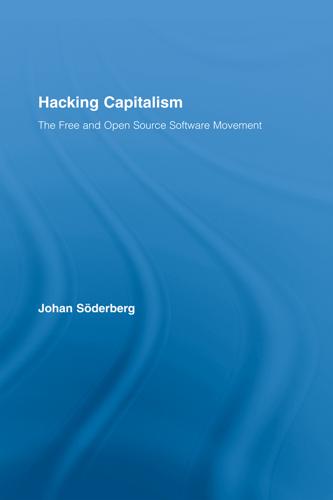
Hacking Capitalism
by
Söderberg, Johan; Söderberg, Johan;
In the context of the computer underground, corporate backers ensure their continued relevance to the FOSS development community by amassing legal powers over developers. That goes a long way to explain the corporate push for software patents. A patent assigns exclusive ownership over an idea, while copyright is narrowed down to the ownership over a single expression of an idea. A very broad field of activities is thus made subject to the legal powers of a patentee. The contradictory policies of IBM towards software patents are suggestive. One branch is lobbying for the introduction of software patents in EU, while another branch of the corporation promises not to use software patents against FOSS developers. In this way, hackers end up working under a condition of suspended illegality where they depend on the goodwill of IBM.
…
Previously, software has been protected as an artistic work under copyright law. In the US and Japan, patents on software have existed for a long time but it is now becoming a common practice among companies to enforce them. In EU a struggle has been ongoing for years over the introduction of European software patents. Software patents pose a threat to GPL because companies can follow copyright law and abide to the terms specified in the free license, while restricting access to the source code through patent law. While submitting to the letter of GPL the spirit is abused. Much the same can be done through Digital Rights Management technology.
…
It is true that Microsoft has been hassled by anti-trust investigations for over a decade, first in America and then in the European Union.62 However, the monopoly which the governments are prosecuting against is also upheld by the same state powers enforcing the patents and the licenses claimed by Microsoft. At the same time as the company was fined by the European Union for unfair competition, the EU commission pushed hard, in part on Microsoft’s behalf, for the introduction of software patents in Europe. Software patents can only strengthen Microsoft’s stranglehold over the market. In this light, the fine which Microsoft was asked to pay looks more like a bribe to pass favourable legislation. The weakest link of the FOSS movement is its relationship with commercial, educational and institutional allies.
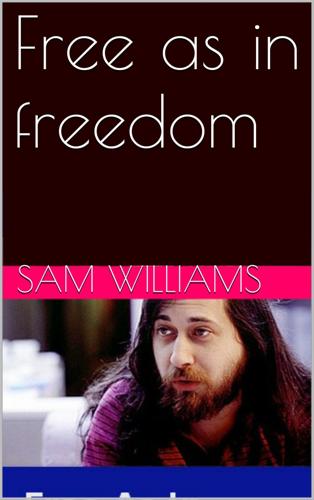
Free as in Freedom
by
Sam Williams
Published 16 Nov 2015
I guess I shouldn't object if you do. If you need to sleep, by all means do." The speech ends with a brief discussion of software patents, a growing issue of concern both within the software industry and within the free software community. Like Napster, software patents reflect the awkward nature of applying laws and concepts written for the physical world to the frictionless universe of information technology. The difference between protecting a program under copyright and protecting a program under software patents is subtle but significant. In the case of copyright, a software creator can restrict duplication of the source code but not duplication of the idea or functionality that the source code addresses.
…
For most companies, however, software patents have become a defensive tool, with cross-licensing deals balancing one set of corporate patents against another in a tense form of corporate detente. Still, in a few notable cases of computer encryption and graphic imaging algorithms, software vendors have successfully stifled rival technologies. For Stallman, the software-patent issue dramatizes the need for eternal hacker vigilance. It also underlines the importance of stressing the political benefits of free software programs over the competitive benefits. Pointing to software patents' ability to create sheltered regions in the marketplace, Stallman says competitive performance and price, two areas where free software operating systems such as GNU/Linux and FreeBSD already hold a distinct advantage over their proprietary counterparts, are red herrings compared to the large issues of user and developer freedom.
…
Such duplication of ideas is common within the commercial software industry, where companies often isolate reverse-engineering teams to head off accusations of corporate espionage or developer hanky-panky. In the jargon of modern software development, companies refer to this technique as "clean room" engineering. Software patents work differently. According to the U.S. Patent Office, companies and individuals may secure patents for innovative algorithms provided they submit their claims to a public review. In theory, this allows the patent-holder to trade off disclosure of their invention for a limited monopoly of a minimum of 20 years after the patent filing.
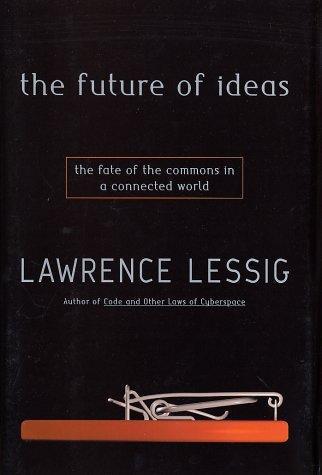
The Future of Ideas: The Fate of the Commons in a Connected World
by
Lawrence Lessig
Published 14 Jul 2001
Greg Aharonian is perhaps the leading expert on the practice of software and Internet-related patents. While he is a supporter of patents in principle, he has been a strong critic of the U.S. Patent Office. Aharonian estimates the number of software patents in a number of ways. He provided the following data to me: “TOTAL is the total number of patents issued that year, GREG is my count or estimated count of software patents (using the Greg Aharonian scheme) issued in that year. SOFTWARE is the number of patents in that year that include the word software some-where in the specification, claims, or abstract. 364&395 is the total number of patents issued in these two main computing classes.”
…
,” Computer & High Technology Law Journal 16 (2000): 263 ; William Krause, “Sweeping the E-Commerce Patent Minefield: The Need for a Workable Business Method Exception,” Seattle University Law Review 24 (2000): 79; Jared Earl Grusd, “Internet Business Methods: What Role Does and Should the Law Play?,” Virginia Journal of Law & Technology 4 (1999): 9. 99 “In the United States, despite the long-standing controversy around software patents, there has been virtually no government effort to study the economic effects of expanded patent protection. The one government-commissioned study of which I am personally aware was suspended at the request of a multinational company with a unique position in software patents.” Brian Kahin, comments in response to “The Patentability of Computer-Implemented Inventions,” available at http://europa.eu.int/comm/ internal_market/en/intprop/indprop/maryland.pdf.
…
Ben Franklin thought patents immoral.74 Some of the greatest inventors of our history have refused to patent most of their inventions.75 Science has traditionally resisted patents. 76 And even Bill Gates, no patsy when it comes to intellectual property protections, expressed skepticism about software patents. As he wrote in a memo to Microsoft executives in 1991: If people had understood how patents would be granted when most of today's ideas were invented and had taken out patents, the industry would be at a complete standstill today.77 The first patent commissioner himself—Thomas Jefferson—was also extremely skeptical about these forms of monopoly.
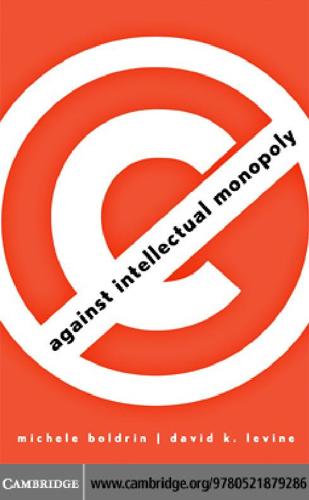
Against Intellectual Monopoly
by
Michele Boldrin
and
David K. Levine
Published 6 Jul 2008
On July 2, 2005, the European Parliament voted 648 to 14 (with 18 abstentions) to scrap the so-called Directive on the Patentability of Computer Implemented Inventions. Although this was good news, the battle on software patents in Europe is far from over. The vote is attributable more to a general fight with the EU Commission, which tends to ignore whatever the Parliament suggests, than to a widespread opposition to software patents within the latter body. In the meanwhile, though, grassroots opposition has grown and, especially within the business community, a variety of action groups have sprung up that oppose software patents along pro-business lines and on the basis of pro–free market arguments such as those exposed in this book. 13.
…
James Bessen, formerly an electronic publishing innovator, has become during the past few years a prolific researcher on the theme of software patents, with a particular attention to the empirical aspects of the problem. A number of other interesting papers, beside those we quote here, can be found at his site, http://www.researchoninnovation.org, and a substantial amount of technical news is at the blog Technological Innovation and Intellectual Property, found at http://www.researchoninnovation.org/WordPress/, which he edits. For more fun with software patents go to the site by the same name, at swpat. ffii.org/patents/effects/index.en.html, which defines itself as a “Collection of news P1: KNP head margin: 1/2 gutter margin: 7/8 CUUS245-04 cuus245 978 0 521 87928 6 May 21, 2008 19:42 The Evil of Intellectual Monopoly 95 stories and case studies showing how the granting, licensing and litigation of patents is affecting players in the software field.”
…
The bottom line “shows that stronger IPRs [Intellectual Property Rights] have had few impacts on the development of new breeds and that few Mexican breeders used IPRs to protect their innovations.”19 Finally, the Mann study is worth reading because it is the only attempt we are aware of to turn around the empirical findings of Bessen. As we extensively reported in Chapter 4, in a sequence of studies, Bessen and collaborators show that software patents did not increase and most likely decreased the rate of innovation in the software industry. As Bessen himself correctly points out in an unpublished rejoinder: The actual empirical findings in this paper point to rather different conclusions than those that Mann draws, namely: few software startups benefits from software patents and patents are not widely used by software firms to obtain venture financing. Indeed, among other things, the paper reports that 80% of venture-financed software startups had not acquired any patents within four years of receiving financing.20 The remaining studies, like Lerner, find little or negative evidence that increased patent protection lead to increased innovation: We find evidence that patents substitute for R&D effort at the firm level; they are associated with lower R&D intensity.21 P1: PDX head margin: 1/2 gutter margin: 7/8 CUUS245-08 cuus245 978 0 521 87928 6 April 29, 2008 15:42 198 Against Intellectual Monopoly The results suggest that stronger patents may have facilitated entry by firms in niche product markets, while spawning “patent portfolio races” among capital-intensive firms.22 It is too soon to draw any conclusion about what the effects will be of India’s upcoming introduction of product patents for pharmaceuticals. . . .
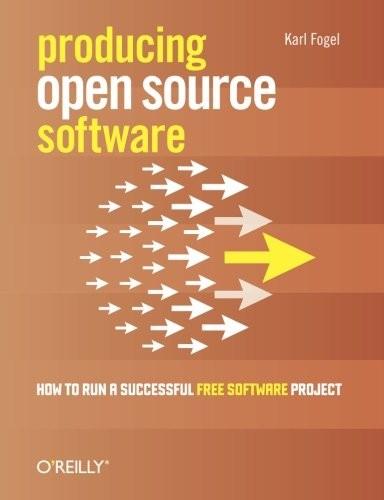
Producing Open Source Software: How to Run a Successful Free Software Project
by
Karl Fogel
Published 13 Oct 2005
To avoid getting into such a situation in the first place, free software projects have sometimes had to code defensively, avoiding patented algorithms in advance even when they are the best or only available solution to a programming problem. Surveys and anecdotal evidence show that not only the vast majority of open source programmers, but a majority of all programmers, think that software patents should be abolished entirely.[102] Open source programmers tend to feel particularly strongly about it, and may refuse to work on projects that are too closely associated with the collection or enforcement of software patents. If your organization collects software patents, then make it clear, in a public and irrevocable way, that the patents would never be enforced when the infringement comes from open source code, and that the patents are only to be used as a defense in case some other party initiates an infringement suit against your organization.
…
_CLS_Bank_International), have made the future of software patents unpredictable. But there is so much money to be extracted via infringement claims, in particular by patent trolls but in general by any entity with a large patent portfolio and a lack of other revenue sources, that I am not optimistic this fight will be over any time soon. If you want to learn more about the problem, there are good links in the Wikipedia article en.wikipedia.org/wiki/Software_patent. I've also written some blog posts summarizing the arguments against software patents, collected at www.rants.org/patent-posts. As of this writing it's been about six years since the main posts there were published, but all the reasons why software patents are a bad idea are just as true now as they were then
…
The current patent system, at least in the United States, is by its nature an arms race: if your competitors have acquired a lot of patents, then your best defense is to acquire a lot of patents yourself, so that if you're ever hit with a patent infringement suit you can respond with a similar threat—then the two parties usually sit down and work out a cross-licensing deal so that neither of them has to pay anything, except to their patent lawyers of course. The harm done to free software by software patents is more insidious than just direct threats to code development, however. Software patents encourage an atmosphere of secrecy among firmware designers, who justifiably worry that by publishing details of their interfaces they will be making it easier for competitors to find ways to slap them with patent infringement suits. This is not just a theoretical danger; it has apparently been happening for a long time in the video card industry, for example.

Dogfight: How Apple and Google Went to War and Started a Revolution
by
Fred Vogelstein
Published 12 Nov 2013
Askaroff, “Elias Howe, Master Engineer,” Sewalot.com; Adam Mossoff, “The Rise and Fall of the First American Patent Thicket: The Sewing Machine War of the 1850s,” Arizona Law Review 53 (2011): 165–211; Richard Cavendish, “The Singer Sewing Machine Is Patented,” HistoryToday.com, 2001; Adam Mossoff, “How Many Patents Make a ‘Patent War’?,” IntellectualVentures.com, 11/15/2012. What is different with software patents: LeRoy L. Kondo, “Untangling the Tangled Web: Federal Court Reform Through Specialization for Internet Law and Other High Technology Cases,” UCLA Journal of Law and Technology, 2002. But by 1981, with the PC gaining: Most of this historical case is from BitLaw, which lays out a fantastic timeline and explains how everything connects, at www.bitlaw.com/software-patent/history.html; also, Erin Biba’s November 2012 interview with an Electronic Frontier Foundation (EFF) lawyer.
…
Court of Appeals, First Circuit, 10/6/1994, https://bulk.resource.org/courts.gov/c/F3/49/49.F3d.807.93-2214.html. Two years before Apple: Presentation at Solutions to the Software Patent Problem, a conference at Santa Clara University, 11/16/2012; Jason Mick, “Analysis: Neonode Patented Swipe-to-Unlock 3 Years Before Apple,” DailyTech.com, 2/20/2012; Liam Tung, “Apple Secures Patent on iPhone’s Slide-to-Unlock Feature,” ZDNet.com, 2/6/2013. Mark Lemley, director: Presentation at Solutions to the Software Patent Problem; Lemley email, November 12, 2012. 9. Remember Convergence? It’s Happening Within a year: Apple, Google, and Microsoft financial statements for 2010 and 2011.
…
“I cannot stop without calling attention to the extraordinary condition of the law which makes it possible for a man without any knowledge of even the rudiments of chemistry to pass upon such questions as these. The inordinate expense of time is the least of the resulting evils, for only a trained chemist is really capable of passing upon such facts.” What is different with software patents today is that despite thirty years of trying, the legal precedents governing what makes a good or a bad patent remain in dispute. In the early days of the computer industry the answer to this question was easy: software wasn’t patentable. It wasn’t viewed as a product separate from the computer itself.
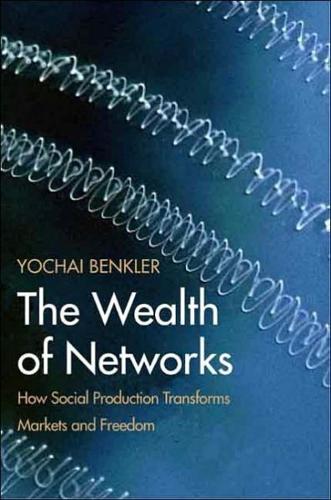
The Wealth of Networks: How Social Production Transforms Markets and Freedom
by
Yochai Benkler
Published 14 May 2006
Using Networked Communication to Work Around Authoritarian Control Toward a Networked Public Sphere Chapter 8 - Cultural Freedom: A Culture Both Plastic and Critical Cultural Freedom in Liberal Political Theory The Transparency of Internet Culture The Plasticity of Internet Culture: the Future of High-Production-Value Folk Culture A Participatory Culture: Toward Policy Chapter 9 - Justice and Development Liberal Theories of Justice and the Networked Information Economy Commons-Based Strategies for Human Welfare and Development Information-Embedded Goods and Tools, Information, and Knowledge Industrial Organization of Hdi-Related Information Industries Toward Adopting Commons-Based Strategies for Development Software Scientific Publication Commons-Based Research for Food and Medicines Food Security: Commons-Based Agricultural Innovation Access to Medicines: Commons-Based Strategies for Biomedical Research Commons-Based Strategies for Development: Conclusion Chapter 10 - Social Ties: Networking Together From "Virtual Communities" to Fear of Disintegration A More Positive Picture Emerges over Time Users Increase Their Connections with Preexisting Relations Networked Individuals The Internet As a Platform for Human Connection The Emergence of Social Software The Internet and Human Community Part Three - Policies of Freedom at a Moment of Transformation Introduction Chapter 11 - The Battle Over the Institutional Ecology of the Digital Environment Institutional Ecology and Path Dependence A Framework for Mapping the Institutional Ecology The Physical Layer Transport: Wires and Wireless Devices The Logical Layer The Digital Millennium Copyright Act of 1998 The Battle over Peer-to-Peer Networks The Domain Name System: From Public Trust to the Fetishism of Mnemonics The Browser Wars Free Software Software Patents The Content Layer Copyright Contractual Enclosure: Click-Wrap Licenses and the Uniform Computer Information Transactions Act (UCITA) Trademark Dilution Database Protection Linking and Trespass to Chattels: New Forms of Information Exclusivity International "Harmonization" Countervailing Forces The Problem of Security Chapter 12 - Conclusion: The Stakes of Information Law and Policy Blurb Endnotes Index Copyright © 2006 Yochai Benkler.
…
Today we are seeing efforts to further extend similar technological regulations-- down to the level of regulating hardware to make sure that it complies with design specifications created by the copyright industries. At other layers of the communications environment, we see efforts to expand software patents, to control the architecture of personal computing devices, and to create ever-stronger property rights in physical infrastructure--be it the telephone lines, cable plant, or wireless frequencies. Together, these legislative and judicial [pg 381] acts have formed what many have been calling a second enclosure movement: A concerted effort to shape the institutional ecology in order to help proprietary models of information production at the expense of burdening nonmarket, nonproprietary production. 152 The new enclosure movement is not driven purely by avarice and rent seeking--though it has much of that too.
…
Part Three: Policies of Freedom at a Moment of Transformation 674 Chapter 11 The Battle Over the Institutional Ecology of the Digital Environment Institutional Ecology and Path Dependence A Framework for Mapping the Institutional Ecology The Physical Layer Transport: Wires and Wireless Devices The Logical Layer The Digital Millennium Copyright Act of 1998 The Battle over Peer-to-Peer Networks The Domain Name System: From Public Trust to the Fetishism of Mnemonics The Browser Wars Free Software Software Patents The Content Layer Copyright Contractual Enclosure: Click-Wrap Licenses and the Uniform Computer Information Transactions Act (UCITA) Trademark Dilution Database Protection Linking and Trespass to Chattels: New Forms of Information Exclusivity International "Harmonization" Countervailing Forces The Problem of Security 675 The decade straddling the turn of the twenty-first century has seen high levels of legislative and policy activity in the domains of information and communications.

The Future of the Internet: And How to Stop It
by
Jonathan Zittrain
Published 27 May 2009
There is a large and growing literature devoted to figuring out whether and under what circumstances software patents contribute to innovation, since they can promise returns to those who innovate. Scholars James Bessen and Robert Hunt have observed that the number of software patents has grown substantially since the early 1980s, from one thousand per year to over twenty thousand per year.65 These patents are obtained, on average, by larger firms than those acquiring patents in other fields, and non-software firms acquire over 90 percent of software patents.66 Bessen and Hunt suggest that these patterns are consistent with a patent thicket— large firms obtaining patents to extract royalties from rivals and to defend themselves from their rivals’ patents.67 While large firms can reach patent détente with each other through cross-licensing,68 smaller firms and individuals may be left out.
…
Blog on GPL Compliance and Licensing, Employers: Don’t Panic, http://www.fsf.org/blogs/licensing/nopanicing (Feb. 17, 2006, 15:52). 64. See 17 U.S.C. § 512 (2000) (defining the DMCA safe harbor protections). 65. See James Bessen & Robert M. Hunt, An Empirical Look at Software Patents, 16 J. ECON. & MGMT. SCI. 157 (2007). 66. Id. 67. See James Bessen & Robert M. Hunt, The Software Patent Experiment, 14—15 (Research on Innovation Working Paper, 2004), available at http://www.researchoninnovation.org/softpat.pdf. Software companies that assert strong intellectual property rights can also deter the work of standards-setting organizations by claiming ownership of some part of a standard.
…
Scholars James Bessen and Robert Hunt have observed that the number of software patents has grown substantially since the early 1980s, from one thousand per year to over twenty thousand per year.65 These patents are obtained, on average, by larger firms than those acquiring patents in other fields, and non-software firms acquire over 90 percent of software patents.66 Bessen and Hunt suggest that these patterns are consistent with a patent thicket— large firms obtaining patents to extract royalties from rivals and to defend themselves from their rivals’ patents.67 While large firms can reach patent détente with each other through cross-licensing,68 smaller firms and individuals may be left out. There are thousands of software patents, and patent infringement, unlike copyright, does not require a copying of the original material: so long as someone else already came up with the idea, the new work is infringing. With copyright, if someone miraculously managed independently to come up with the tune to a Beatles song, that tune would not be infringing the Beatles’ copyright, since it did not copy the song—it was independently invented.
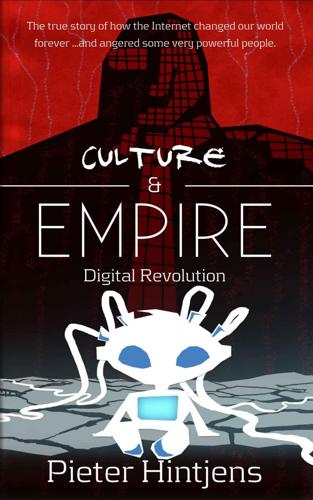
Culture & Empire: Digital Revolution
by
Pieter Hintjens
Published 11 Mar 2013
Today, activists across the world are occupying the squares and streets of our cities, demanding an end to crony politics. I started to decrypt and document the dynamics of the digital revolution and counter-revolution in 1999, and then in 2005 took over as president of the Foundation for a Free Information Infrastructure (FFII), a European activist network that fought software patents. We built websites and campaigns, organized conferences, and wrote laws. They called us "anti-business" so we wore suits and brought countless small business owners to speak. We tried to convince emerging Internet giants to support us. We were five years too early. At the time, Google had a single solitary patent lawyer and could not take the patent problem seriously and help us.
…
At the time, Google had a single solitary patent lawyer and could not take the patent problem seriously and help us. While we defeated a huge army of lobbyists in the European Parliament in 2005, it was a temporary success. Every committed FFII activist burned out and had to go back to a "normal" life. The FFII is more or less shuttered now. It spawned successors like April and imitators like End Software Patents. Younger minds, unhampered by twentieth century conventions of style and reputation, continue to deconstruct the concept of "organization." They are creating new activist communities capable of challenging entire governments. From FFII to Anonymous, they are the Anti-Corn-Law League of the digital revolution.
…
Both of these fights -- which are widespread and ongoing -- involve the basic definitions of "property" and the right of large firms to lobby governments into changing these definitions for their own benefit. Both are also typified by the politicization of digital society, as it finds that its road to freedom is blocked by old (copyright) laws or new (software patent) laws. There are other fights as well, related to these. One is over the way the state is using digital technology to censor the Internet, to spy on its citizens, and to build up databases of every aspect of our lives. Somehow, we don't mind too much if Google records every search we make and every site we visit.
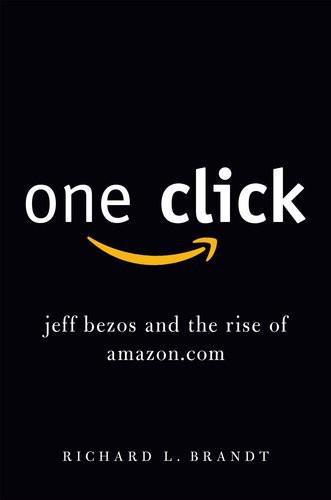
One Click: Jeff Bezos and the Rise of Amazon.com
by
Richard L. Brandt
Published 27 Oct 2011
Patents are supposed to be granted only for “non-obvious” inventions. How much thinking does it take to figure out how to cut the ordering process to a single click? Legal experts began referring to it as the “notorious” patent. An article in one law journal described it as “probably the most memorable example of an unoriginal software-patent.” Technology book publisher and open-source advocate Tim O’Reilly described that patent as “one more example of an intellectual property milieu gone mad.” In an open letter to Bezos, published online, he said that the patent “fails to meet even the most rudimentary tests for novelty and non-obviousness to an expert in the field” and would stifle creativity on the Internet.
…
It didn’t specify exactly how fast that share of market was growing. (By 2010, Barnes & Noble was suffering, while Amazon.com is as strong as ever.) In response to Amazon.com’s lawsuit against Barnes & Noble, the Free Software Foundation, an advocacy group that promotes open-source software and is staunchly against software patents, called for a boycott against Amazon.com. That didn’t work either. In December 1999, a district court in Washington State upheld Amazon’s patent, issuing a preliminary injunction preventing Barnes & Noble from using Express Lane. The appeal took several years. Finally, in 2002, Barnes & Noble settled the suit with Amazon.com.
…
“People don’t just buy: Bezos, “A Bookstore by Any Other Name.” 10. “To be nine times: Ibid. 10. When one elderly woman: Peter de Jonge, “Riding the Wild, Perilous Waters of Amazon.com,” New York Times, March 14, 1999. 11. One of Bezos’s: Bezos, “A Bookstore by Any Other Name.” 12. So what we think: Ibid. 13. “probably the most: R. M. Ballardini, “The Software Patent Thicket: A Matter of Disclosure,” (2009) 6:2 SCRIPTed 207, www.law.ed.ac.uk/ahrc/script-ed/vol6-2/ballardini.asp. 14. one more example: http://oreilly.com/amazon_patent/amazon_patent.comments.html. Chapter 2: Portrait of the Entrepreneur as a Young Man 19. Jeff’s family’s Texas roots: Joshua Quittner, “Jeff Bezos: An Eye on the Future,” Time, December 27, 1999. 20.
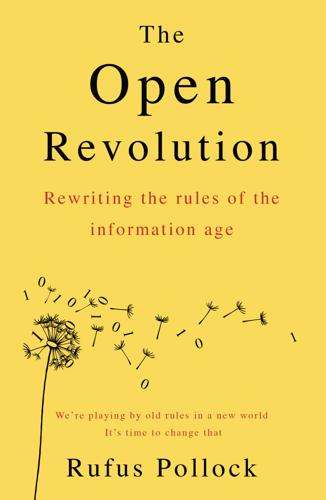
The Open Revolution: New Rules for a New World
by
Rufus Pollock
Published 29 May 2018
But the complexity that confronts us and the rules that govern our world – and which shape and shift power – are practically opaque. This applies not only to us, but to our representatives as well. Generalists in a sea of detail, they have no way of knowing, much of the time, what the effects will be of what they are doing. I remember watching the final vote on the Software Patents directive in the European Parliament in 2005. On a voting day there, each party produces a “voting list” instructing its MEPs how to vote (and why) on each amendment that will come up (usually there is not a single text but a proposed text and then a bunch of amendments, each to be voted on).
…
At first on a tiny scale, a community of coders and scientists, connected by personal computers and the rudimentary internet, gathered around a radical ideal, as they gradually worked out the ramifications of the difference between information and physical things. Information politics began with such groups as the Free Software Foundation (founded 1986), the Electronic Frontier Foundation (1990), and the Foundation for a Free Information Infrastructure (1999). There were some major early triumphs, such as the rejection of software patents in Europe in 2005. Groups formed and re-formed, but there was little shared language or vision. The excitement of the internet economy spurred consideration of monopoly rights and the potential of Openness in an information age – most notably and most popularly by American law professors such as Lawrence Lessig and James Boyle.

Digital Wars: Apple, Google, Microsoft and the Battle for the Internet
by
Charles Arthur
Published 3 Mar 2012
In November 2013, the Rockstar company (now a standalone patent licensing entity with offices in Ottawa, Canada and Pano, Texas) filed a lawsuit in Delaware alleging that Google’s AdWords infringe a patent filed in 1997 – before the company existed. It was as though the ghost of Overture had returned – but this time, backed by bitter rivals. App patents The patent licensing business cut both ways, though. As smartphones took off, two US companies with software patents granted in the United States – Lodsys and MacroSolve – began suing developers in the United States and beyond, claiming infringement of their intellectual property. Apple and Google had licensed the patents involved – for Lodsys, it involved in-app purchases, a function available only through Apple’s own SDK – and said their protection extended to the developers.
…
The United States, though, is the largest single English-language market; cutting yourself off from that market limits potential clients. But independent developers began to see it as dangerous territory. If there is a single threat to the future of the smartphone, it is patents – and particularly software patents, which allow the patenting of an outcome rather than a process. If developers get too scared to develop, the apps market will become the province only of the well-funded and legally protected; the long tail of tiny developers with great ideas will be stunted. The outcome of the patent wars won’t be decided within a year or even two years.
…
The outcome of the patent wars won’t be decided within a year or even two years. Yet, for Apple and Google and Microsoft, anything that dissuades developers from writing software for their platform (and so reduces the number of apps, which reduces the reliance on a particular OS) is bad. Whether lobbying can turn the supertanker of software patents in the United States around is questionable, but the experience of app developers like Craig Hockenberry, whose Twitterrific app was one of the reasons that thousands of people joined Twitter, and who found himself being targeted by not one but two patent-holding companies, is not encouraging.
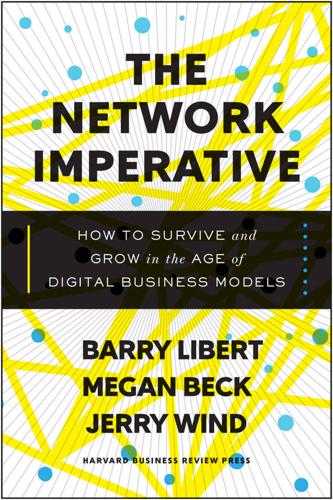
The Network Imperative: How to Survive and Grow in the Age of Digital Business Models
by
Barry Libert
and
Megan Beck
Published 6 Jun 2016
You cannot turn people on and off like a production plant or move them around for your convenience like inventory. People need to be motivated to do their best work, and motivation is even more complicated with external networks than with employees. IDEAS AND INFORMATION. Here we refer to the intellectual capital created by people. Software, patents, and biotechnology are common information-based assets, and both the market and traditional accounting systems are slowly coming up to speed on the management and measurement of valuable ideas. RELATIONSHIPS AND ACCESS. Human beings are naturally social creatures, and all of us are tied in myriad ways to our familial, social, and professional networks.
…
Manufacturer, distributor, or retailer Professional services, care provider, or consultancy Developer or creator of technology, biotechnology, or pharmaceuticals Platform provider, facilitator, or connector Where does the bulk of your allocated capital go? Property, plant, and equipment (PPE) Payroll for employees who provide services to customers Research and development for software, patents, and other IP Building and evangelizing a network or platform What does top talent usually do at your firm? Plant, production, and operations Client or customer services Research and development Digital development (cloud, big data analytics, social, and mobile) What risks are of greatest concern to your organization?
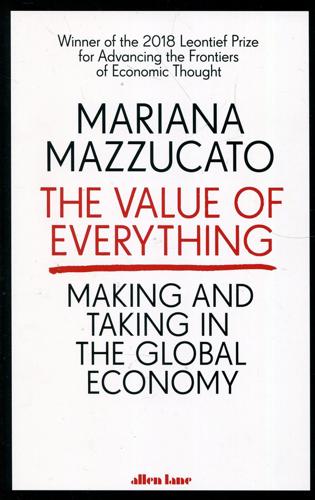
Value of Everything: An Antidote to Chaos The
by
Mariana Mazzucato
Published 25 Apr 2018
Similarly, patents play a far more important role in the diffusion of information for R&D labs in manufacturing firms in Japan compared with those in the US, where publication and informal information exchange is more important (W. M. Cohen, A. Goto, A. Nagata, R. R. Nelson and J. P. Walsh, ‘R&D spillovers, patents and the incentives to innovate in Japan and the United States', Research Policy, 1(8-9) (2002), pp. 1349-67: doi: http://doi.org/10.1016/S0048-7333(02)00068-9 25. According to M. A. Lemley, in ‘Software patents and the return of functional claiming', Wisconsin Law Review, 2013(4), pp. 905-64, the costs of software innovation are lower than innovation in the life sciences. Software is also protected by copyrights, which already provide for effective prevention of copying by others. Network effects may help innovators to capture returns regardless of intellectual property protection (more on this later in this chapter).
…
Network effects may help innovators to capture returns regardless of intellectual property protection (more on this later in this chapter). There is, in addition, the open-source community, which suggests that patents may not be a necessary condition for innovation in the sector. Finally, software patentability varies across regions and countries (for example, it is limited in Europe and India, and broad in the US), which also suggests that patent protection may reflect a policy choice. 26. Baumol, ‘Entrepreneurship: Productive, unproductive, and destructive'. 27. R. Mazzoleni and R. R. Nelson, ‘The benefits and costs of strong patent protection: A contribution to the current debate', Research Policy, 27(3) (1998), pp. 273-84. 28.
…
., ‘Growth forecast errors and fiscal multipliers', Working Paper no. 13/1 (Washington, DC: International Monetary Fund, 2013). Leigh, D., Devries, P., Freedman, C., Guajardo, J., Laxton, D. and Pescatori, A., ‘Will it hurt? Macroeconomic effects of fiscal consolidation', IMF World Economic Outlook (2010), pp. 93-124. Lemley, M. A., ‘Software patents and the return of functional claiming', Wisconsin Law Review, 2013(4), pp. 905-64. Lemley, M. A. and Shapiro, C., ‘Probabilistic patents', Journal of Economic Perspectives, 19(2) (2005), pp. 75-98: DOI: 10.1257/0895330054048650. Lequiller, F. and Blades, D., ‘The general government account', in Understanding National Accounts, 2nd edn (Paris?
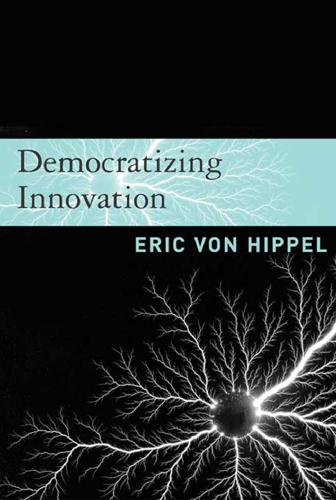
Democratizing innovation
by
Eric von Hippel
Published 1 Apr 2005
International Review of Law and Economics 22, no. 1: 81–107. Bessen, J. 2003. Patent Thickets. Working paper, Research on Innovation and Boston University School of Law. Bessen, J. 2004. Open Source Software. Working paper, Research on Innovation. Bessen, J., and R. M. Hunt. 2004. An Empirical Look at Software Patents. Working paper, Federal Reserve Bank of Philadelphia. Bijker, Wiebe. 1995. Of Bicycles, Bakelites and Bulbs. MIT Press. Boldrin, M., and D. Levine. 2002. “The Case against Intellectual Property.” AEA Papers and Proceedings, May: 209–212. Bresnahan, T. F., and S. Greenstein. 1996a. “Technical Progress and Co-Invention in Computing and in the Uses of Computers.”
…
Hirschleifer, J. 1971. “The Private and Social Value of Information and the Reward to Inventive Activity.” American Economic Review 61, no. 4: 561–574. Hollander, S. 1965. The Sources of Increased Efficiency. MIT Press. Horwich, M. 1982. Clipped Wings. MIT Press. Hunt, R. M., and J. Bessen. 2004. “The Software Patent Experiment.” Business Review, Federal Reserve Bank of Philadelphia Q3: 22–32. Jensen, M. C., and W. H. Meckling. 1976. “Theory of the Firm: Managerial Behavior, Agency Costs, and Ownership Structure.” Journal of Financial Economics 3, no. 4: 305–360. Jeppesen, L. B. 2004. Profiting from Innovative User Communities.

The Second Machine Age: Work, Progress, and Prosperity in a Time of Brilliant Technologies
by
Erik Brynjolfsson
and
Andrew McAfee
Published 20 Jan 2014
We should also reform the U.S. intellectual property regime, particularly when it comes to software patents and copyright duration. In any age, but especially in the second machine age, intellectual property is extremely important. It’s both a reward for innovation (if someone invents a better mousetrap, he or she gets to patent it) and an input to it (most new ideas are recombinations of existing ones). Governments therefore have to strike a delicate balance; they have to provide enough intellectual property protection to encourage innovation but not so much that they stifle it. Many of today’s informed observers conclude that software patents are providing too much protection.
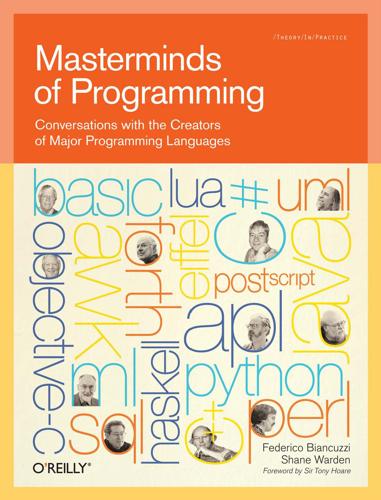
Masterminds of Programming: Conversations With the Creators of Major Programming Languages
by
Federico Biancuzzi
and
Shane Warden
Published 21 Mar 2009
Quoting from http://www.colorforth.com/HOPL.html : “The issue of patenting Forth was discussed at length. But since software patents were controversial and might involve the Supreme Court, NRAO declined to pursue the matter. Whereupon, rights reverted to me. I don’t think ideas should be patentable. Hindsight agrees that Forth’s only chance lay in the public domain. Where it has flourished.” Software patents are still controversial today. Is your opinion about patents still the same? Chuck: I’ve never been in favor of software patents. It’s too much like patenting an idea. And patenting a language/protocol is especially disturbing.
…
Before joining Microsoft in 1996, Anders was one of the first employees of Borland International Inc. As principal engineer, he was the original author of Turbo Pascal, a revolutionary integrated development environment, and chief architect of its successor, Delphi. Anders coauthored The C# Programming Language, published by Addison-Wesley, and has received numerous software patents. In 2001, Anders was the recipient of the prestigious Dr. Dobbs Excellence in Programming Award, and in 2007 he and his team were awarded Microsoft’s Technical Recognition Award for Outstanding Technical Achievement. Anders studied engineering at the Technical University of Denmark. Paul Hudak is a professor in the department of computer science at Yale University.

The End of Ownership: Personal Property in the Digital Economy
by
Aaron Perzanowski
and
Jason Schultz
Published 4 Nov 2016
Humphrey, “Software Unbundling: A Personal Perspective,” IEEE Annals of the History of Computing 34, no. 1 (2002): 59–63, at 60, doi:10.1109/85.988582. 24. The Copyright Act did not embrace software until the Computer Software Copyright Act of 1980, 94 Stat. at 3028–29. The Supreme Court first opened the door to software patents in 1981. See Diamond v. Diehr, 450 U.S. 175 (1981). But the explosion of software patenting didn’t occur until the Federal Circuit’s 1998 decision in State St. Bank and Trust Co. v. Signature Fin. Grp., Inc., 149 F.3d 1368 (Fed. Cir. 1998). 25. Video games are one important exception. See Computer Software Rental Amendment Act of 1990, Pub.
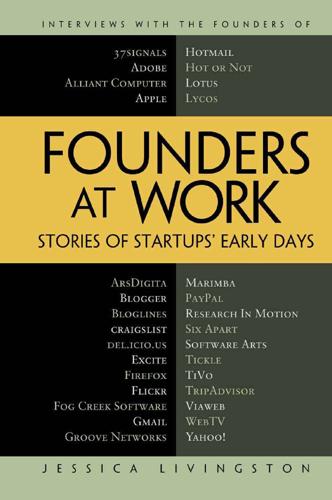
Founders at Work: Stories of Startups' Early Days
by
Jessica Livingston
Published 14 Aug 2008
They would look extremely sharp on the TV, but they would not flash, so you could now do a high-resolution image on a TV. The technology was in some of the Macintoshes, but not many people were hooking up Macs to TVs. 178 Founders at Work The other thing—and this is an interesting point—back in the 1980s, when I developed this technology for Apple, software patents were not things that people filed. It was mainly hardware patents. Later on, people started filing software patents. The reason is software was considered an algorithm, and an algorithm is not patentable. A Fourier transform is not patentable. It’s considered a mathematical function. This technique for stabilizing the image—the basic underlying principles of it—were things that patent attorneys said we couldn’t file patents on, so it was open for anyone to use.
…
Eventually, various federal and state authorities wanted to use it too, because they started to see that we were getting pretty good at this stuff. We would invite them in, and they would have to go into the room and use it and leave. They couldn’t take it with them, couldn’t print. Livingston: Did you patent this technique? Levchin: I didn’t really want to patent it because, for one, I don’t like software patents, and, two, if you patent it, you make it public. Even if you don’t know someone’s infringing, they will still be getting the benefit. Instead, we just chose to keep it a trade secret and not show it to anyone. After a while, IGOR became well known to the company, like all the other tools that we had built early on.
…
See Ruby on Rails Rakuten, 215 Ramsay, Mike, 191–203 Red Hat, 341 Reddit, 450 Reese, John, 77 Regulation FD, 435–436, 442 reliability issues, 24 Replay, 200–201, 202 Request for Proposal bid, 300 Research In Motion, 141–151 Richman, Herb, 444 Rocketmail, 25, 135 Roizen, Heidi, 307 Rosen, Ben, 84, 96 Rosenfeld, Eric, 90 Ross, Blake, 395–404 Ruby on Rails, 309, 313–314, 359 Ryan, George, 301 Ryner, Brian, 396 S Sachs, Jonathan, 89, 95, 109 Saltzer, Jerry, 80 Sarbanes-Oxley, 442 464 Index scalability, 12 Schachter, Joshua, 223–232 Schwartz Communications, 215 Scott, Mike, 46 Scull, John, 287 search button deal, 69–71 search engine, 67 search feature, 162 search technology, 63 Season Pass, 200 second-system syndrome, 338 security, 1 security company, 10 Sega video games, 174 Senate, 270 Sequoia, 300 Server Fund Drive, 119 servers, 21 Sevin Rosen, 96 sex category, 136 Seybold Conference, 292 SGI, 193 Shanny, Nick, 361 Shareholder Direct service, 442–443 shareholder lawsuits, 159 Shareholder.com, 427–446 Shear, Emmett, 449 Shellen, Jason, 122 Shugart floppy controller, 53–54 Shugart floppy disk drive, 53 Signal vs. Noise, 310, 312 Simonyi, Charles, 282 Singel, Ryan, 450 Singh, Sanjeev, 163 Six Apart, 405–418 Smalltalk, 207 Smith, Hank, 56–57 Smith, Jack, 17, 135 social networking services vs. Flickr, 260 Software Arts, 73–88, 92, software distribution, 155 software industry, 307 software package, 9 software patents, 178 software products, 315 software startups, 307 software toolkit, 319 software vs. hardware designers, 21 Sogge, Dick, 444 Sony, 179, 182–184, 199, 201 Sousan, Andre, 43 space-based technology, 147–148 Spencer, Graham, 61, 62, 71 Spolsky, Joel, 345–360 Spread Firefox site, 400 Squared Circle group, 262 Stanford, 134 Star workstation, 289 start-up like projects, 168 startup culture, 16 startup financing, 450, 451, 453 state machine, 53 Steinert, Langley, 361, 369 storage requirements, 163, 168 Strangeberry, 154, 155 student accounting system, 300 Stuff, 113, 115 subscription-based software distribution, 158 synchronization algorithm, 103 Index 465 T Ta-da List, 309 tagging, 261–262 tagline, 22 Tall, Spencer, 182 Tandem Computer, 429 targeted advertising, 22–23 Taylor, Bob, 281 technology, 158 Technomedia, 420 television networks, 202 television screens, 178 Terra Networks, 419 TextPayMe, 449 The Mythical Man-Month, 338 The Soul of a New Machine, 427 The Wall Street Journal, 270 Thiel, Peter, 1–2, 13–14 Thinking Machines, 269–271 Thinking Machines team, 265–267 THQ, 175 Tickle, 387–394 Time Warp patent, 196 time zones, 313 Tintin, 348 Tiny Troll, 90–91 TiVo, 191–204 TiVo phone home, 197–198 trade shows, 303–304 travel sites, 365–366 Travels with Samantha, 318–319 Trellix, 121 TripAdvisor, 361–376 Trott, Ben, 405 Trott, Mena, 405–418 Trustic, 233 Tufte, Edward, 321 Type Pad hosted service, 405 TypePad, 410–411 U United States, 192 University of Waterloo, 143 UNIX, 195 Unix vs.
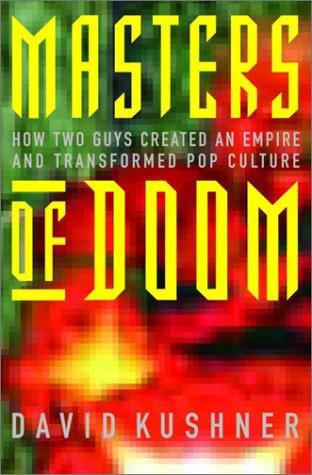
Masters of Doom: How Two Guys Created an Empire and Transformed Pop Culture
by
David Kushner
Published 2 Jan 2003
I must be having a weird dream. He awoke in a cold sweat. There was no escape, not even in sleep. Though Carmack rarely felt–let alone cracked from–pressure, Quake was beginning to break him. He started lashing out at his employees. One day, Jay suggested they talk about getting software patents for their game technology. “If you guys ever apply for software patents,” Carmack barked, “I quit, that’s it, end of discussion.” Everything grated on him: the distractions of business, the politics of emotion, the laziness–at least in his mind–of others. “You always leave early,” Carmack said one evening as Sandy was walking out the door.

Coding Freedom: The Ethics and Aesthetics of Hacking
by
E. Gabriella Coleman
Published 25 Nov 2012
In fact, despite the fact that harmonization is so often used to describe the creation of a single global standard of intellectual property law, the marked conflict over intellectual property law that resulted is far from harmonious. To take one prominent illustration, in 2005 the European Parliament overwhelmingly rejected a proposed software patent directive that was under consideration for a number of years. This decision came after pressure from a grassroots movement that engaged in years of demonstrations, many of them organized and attended by F/OSS developers (Karanovic 2010). The directive sought to establish and fully harmonize the criteria for software patentability, since each national patent office still follows a slightly different set of principles. The European Commission over the last few years has aggressively tried to pass patent measures that outline principles for adoption throughout the European Union—criteria that, like the US system, overwhelmingly favor private enclosure over public access.
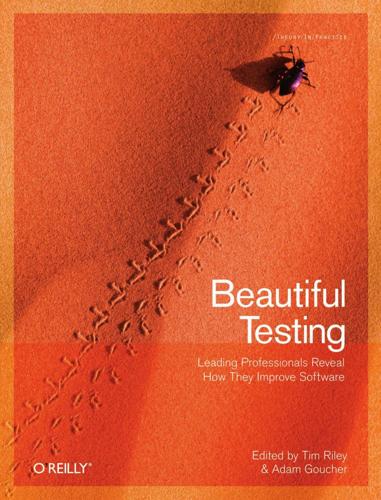
Beautiful Testing: Leading Professionals Reveal How They Improve Software (Theory in Practice)
by
Adam Goucher
and
Tim Riley
Published 13 Oct 2009
He lives in rural southwest Colorado, but contributes to a couple of magazines, several mailing lists, and is even a character in a book about software testing. M URALI N ANDIGAMA is a quality consultant and has more than 15 years of experience in various organizations, including TCS, Sun, Oracle, and Mozilla. Murali is a Certified Software Quality Analyst, Six Sigma lead, and senior member of IEEE. He has been awarded with multiple software patents in advanced software testing methodologies and has published in international journals and presented at many conferences. Murali holds a doctorate from the University of Hyderabad, India. B RIAN N ITZ has been a software engineer since 1988. He has spent time working on all aspects of the software life cycle, from design and development to QA and support.
…
He has tested software for 18 years, including everything from spacecraft simulators, ground control systems, high-security operating systems, language platforms, application servers, hosted services, and open source web applications. He has managed software testing teams in companies from startups to large corporations, consisting of 3 to 120 people, in six countries. He has a software patent for a testing execution framework that matches test suites to available test systems. He enjoys being a breeder caretaker for Canine Companions for Independence, as well as live and studio sound engineering. M ARTIN S CHRÖDER studied computer science at the University of Würzburg, Germany, from which he also received his master’s degree in 2009.

From Airline Reservations to Sonic the Hedgehog: A History of the Software Industry
by
Martin Campbell-Kelly
Published 15 Jan 2003
Though ADR succeeded in getting a patent, this was achieved by claiming that the program was a “process” akin to a manufacturing process. It was not clear that the patent would stand up if challenged. Informatics failed to get a patent in the United States, though it was successful in Great Britain and Canada. The software patent situation was exceedingly complex, with a backlog of about 75 applications in 1968 and with five appeals in progress. In addition, there were complex public policy issues regarding the validity of software patents, insofar as patents were designed to protect tangible artifacts rather than “ideas.” Exactly what kind of an artifact software represented was an open question. Copyright law also had significant limitations for protecting software.
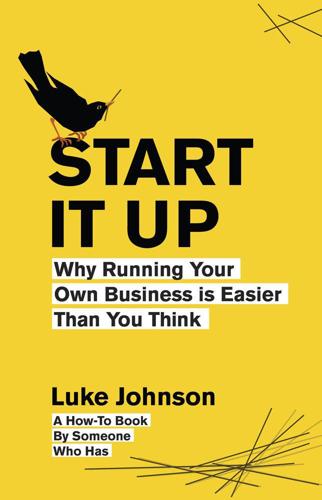
Start It Up: Why Running Your Own Business Is Easier Than You Think
by
Luke Johnson
Published 31 Aug 2011
Certainly, the juicy profits enjoyed by big pharma in the US are part of the reason that health-care costs there are so high – yet we are all beneficiaries of their discoveries and formulations. I believe in freedom for enterprise, but I also think entrepreneurs must be allowed to reap the just rewards for their efforts. Moreover, it is clear that some abuse the patent system to prevent progress. Too many patents are now issued, many of dubious merit – especially in the field of software patents. Patent trolls abound – those who file ‘paper patents’ or ‘submarine patents’ that they never intend to exploit, but merely use as tools to sue unwitting infringers. Both Research in Motion, maker of the BlackBerry, and even Microsoft have suffered from this harmful toll on endeavour. Inventors I have met are fundamentally motivated by a desire to see their creations become appreciated and recognized, rather than an urge to accumulate wealth.
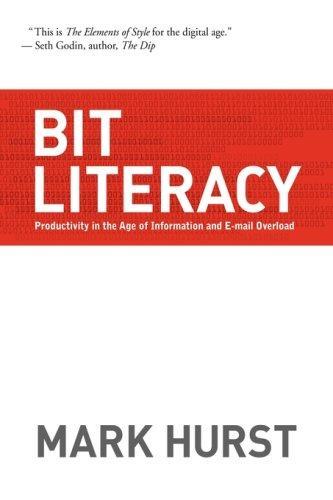
Bit Literacy: Productivity in the Age of Information and E-mail Overload
by
Mark Hurst
Published 15 Jun 2007
It’s unfortunate that iPhoto is designed for one-level storage. 20 Personal letters are one exception. Often, for letters from close relatives or traveling friends, “the longer, the better.” 21 PNG and GIF are nearly interchangeable formats. In the late 1990s GIF was used widely on the Internet until Unisys, a technology company, began to enforce its software patent on the GIF format. PNG, a similar format with no patent protection, then became very popular. When the Unisys patent expired in 2003, GIFs became freely available again. Today the only major difference between the formats is that a GIF file can contain an animated graphic. 22 For more details on AAC, see the Wikipedia entry for “Advanced Audio Coding.” 23 Test conducted on Microsoft Word 2004 for Mac, version 11.0. 24 This was the first time many computer users had ever encountered fonts.

WTF?: What's the Future and Why It's Up to Us
by
Tim O'Reilly
Published 9 Oct 2017
First off, I think that you are reaping a harvest of ill-will with the technical community. While I know you are setting your sights on a wider consumer audience, the serious technical community represents the core of your early adopters and many of your best customers, especially in the book market. . . . And I can tell you that those customers are solidly against software patents. Second (and this is the point most important to me), the web has grown so rapidly because it has been an open platform for experimentation and innovation. It broke us loose from the single-vendor stranglehold that Microsoft has had on much of the software industry, and created a new paradigm with opportunities for countless new players, including Amazon.
…
That’s been a key part of your success so far: You’ve been able to take a great open platform, and build vertical applications that provide a fabulous service to your customers. Filing frivolous patents will only retard the growth of the platform. And that’s a third point: The patent is very unlikely to be upheld in the long run. It’s a classic example of the kind of software patent that would never be granted if the patent office had even the slightest clue about software: A trivial application of cookies. I’d be very surprised if there isn’t a fair amount of prior art even in using cookies in conjunction with saved credit card information. But even if there isn’t, the basic method of saving state information about prior visitors is so fundamental that there’s nothing new in what you did.
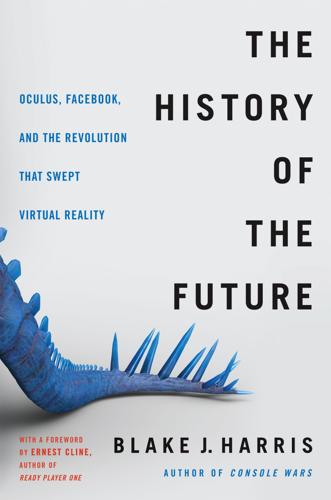
The History of the Future: Oculus, Facebook, and the Revolution That Swept Virtual Reality
by
Blake J. Harris
Published 19 Feb 2019
But there was also something else about him—something ideological in nature—that elevated Carmack from mere living legend to Gandalfian hero: a belief that openness, open sourcing, and technological transparency were critical to innovation. In a now-famous blog post entitled “Parasites,” Carmack likened software patents to “mugging someone,” explaining that “in the majority of cases in software, patents effect independent invention.”6 These were not just empty words. Carmack lived by this credo. That’s why he always publicly shared the source code for his games (after they had been released); that’s why he regularly provided elaborate advice to hardware vendors (like Sony, Microsoft, and Nvidia); and that’s why he readily divulged experimental findings and in-progress theories when delivering keynote speeches (particularly at QuakeCon, an annual celebration of id Software’s games).
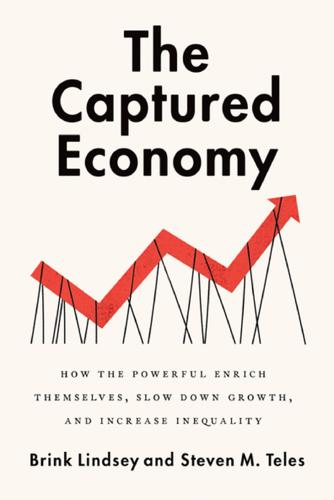
The Captured Economy: How the Powerful Enrich Themselves, Slow Down Growth, and Increase Inequality
by
Brink Lindsey
Published 12 Oct 2017
This vagueness in the boundaries of intellectual property, combined with the immense number of patents in force at any one time, make it virtually impossible for downstream innovators to be sure whether the new products they are developing are infringing on someone else’s patents. One study estimates that it would take two million patent attorneys working full time just to check every software-producing firm’s new products against all the new software patents issued in a given year; alas, there are only 40,000 practicing patent attorneys in the country.23 As a result, the patent system can act as a vast and uncharted minefield through which innovators must pass at their peril. The dysfunctions of the patent system have been exacerbated in recent years by the rise of so-called patent assertion entities, better known as “patent trolls.”
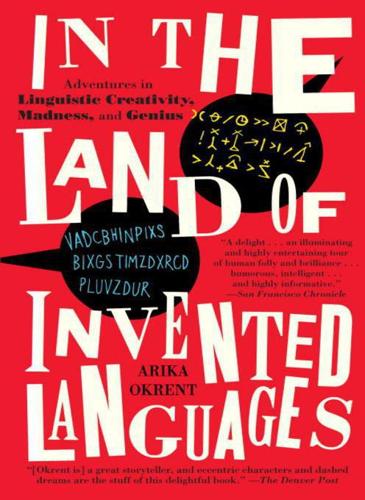
In the Land of Invented Languages: Adventures in Linguistic Creativity, Madness, and Genius
by
Arika Okrent
Published 1 Jan 2009
These rules were very explicit in Loglan, and they were the part of the language that had involved the most effort to develop. Can the rules of a language be owned? Probably not. You can patent a machine that uses a certain mathematical formula, but not the formula itself. You can own an implementation of an algorithm, but not the algorithm. There is, however, some blur in this area within the murky world of software patents, so given the right lawyer and the right judge, who knows? There is one invented language that is essentially owned by a private company, though the terms of ownership have not been tested in court: Klingon is protected by a trademark held by Paramount Pictures. Without proper license, you cannot use the name “Klingon” to describe, say, a book of your own original Klingon poetry.
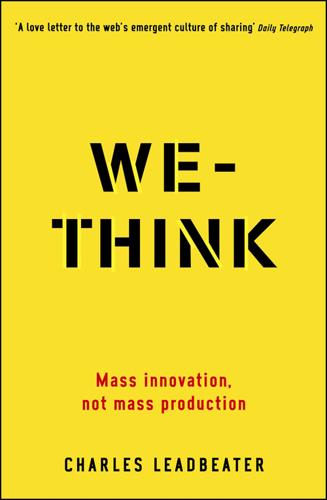
We-Think: Mass Innovation, Not Mass Production
by
Charles Leadbeater
Published 9 Dec 2010
By 2006, the company still had 7,500 internal researchers but also drew on 2,000 researchers among its suppliers and 7,000 virtual or extended relationships. P & G is also letting go of more of its ideas to see what other companies can do with them. All its patents will be released five years after they are lodged or three years after a product is shipped. IBM has been through a similar transformation, donating more than 500 software patents to the Open Source Foundation and funding Linux development with at least $100 million a year. Nokia, the mobile-phone company, has attracted more than 1 million developers to its online developers’ forum and announced it will not take action against open-source applications of its patents. Lego has started to work closely with software-developers creating open-source programs for its Mindstorms suite of products.
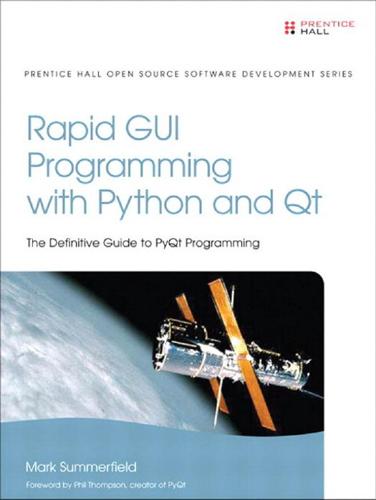
Rapid GUI Programming With Python and Qt
by
Mark Summerfield
Published 27 Oct 2007
So, at the end of the findandreplacedlg.py file, we have added some extra code. This code is executed only if the file is run stand-alone, so it does not affect performance or interfere with the use of the dialog when it is used in an application. if __name__ == "__main__": import sys text = """US experience shows that, unlike traditional patents, software patents do not encourage innovation and R&D, quite the contrary. In particular they hurt small and medium-sized enterprises and generally newcomers in the market. They will just weaken the market and increase spending on patents and litigation, at the expense of technological innovation and research.
…
PYQT_VERSION_STR variable, 200 QT_VERSION_STR variable, 200 SIGNAL(), 131 SLOT(), 131 see also under class names QTcpServer (QtNetwork), 529, 530, 539 incomingConnection(), 530, 539 listen(), 529 QTcpSocket (QtNetwork), 522, 524, 531, 540 base class, QAbstractSocket QTextBlock (QtGui), 396 QTextBlockFormat (QtGui), 404 QTextBrowser (QtGui), 117, 381, 511, 579 base class, QTextEdit QTextCharFormat (QtGui), 386, 387, 404 QTextCursor (QtGui), 297, 384, 403–407 currentFrame(), 404 hasSelection(), 385 insertBlock(), 404 insertImage(), 404 insertTable(), 404 insertText(), 384, 404 removeSelectedText(), 297 selectedText(), 297 setPosition(), 406 QTextDocument (QtGui), 381, 383, 396, 398, 401–407, 403, 438, 439, 489 base class, QObject clear(), 383 drawContents(), 438, 489 idealWidth(), 390, 439, 489 isEmpty(), 385 isModified(), 287, 385 print_(), 403, 407 setDefaultFont(), 438, 439, 489 setHtml(), 403, 438, 439, 489 setModified(), 286, 383, 384 toHtml(), 407 QTextEdit (QtGui), 285, 310, 381, 383, 390, 392, 579 Index QTextEdit (QtGui) (cont.) base class, QAbstractScrollArea append(), 120 canPaste(), 385 currentCharFormat(), 393, 395 cursorRect(), 392, 393 cut(), 385 document(), 286, 287, 383, 384, 385, 396 ensureCursorVisible(), 392, 393 insertPlainText(), 297 mergeCurrentCharFormat(), 395 setHtml(), 488 setLineWrapMode(), 390 setPlainText(), 384 setTabChangesFocus(), 390 setTextColor(), 393 textCursor(), 297, 384, 385 toHtml(), 395 toPlainText(), 384, 395 QTextOption (QtGui), 409 QTextStream (QtCore), 250–255, 254, 258, 384 atEnd(), 252, 253, 254 readAll(), 384 readLine(), 252, 253, 254 setCodec(), 250, 252, 254, 258, 384 QTextTableFormat (QtGui), 404 QtGui module (PyQt4), 19 see also under class names QThread (QtCore), 538, 540 isRunning(), 547, 551 run(), 538, 540, 548, 553 start(), 539, 547, 553 wait(), 547, 548, 551 QTime (QtCore), 45 isNull(), 45 see also time module QTimeEdit (QtGui), 576 base class, QDateTimeEdit QTimer (QtCore), 373, 376 base class, QObject singleShot(), 115, 306 start(), 373, 376 timeout() signal, 373, 376 613 QtNetwork module (PyQt4), 521, 523 see also under class names QToolBar (QtGui), 179–180, 180 base class, QWidget addSeparator(), 178, 180 QToolTip (QtGui), 171, 200, 514 QTransform (QtGui), 356 QTranslator (QtCore), 516 QTreeView (QtGui), 415, 495, 579 base class, QAbstractItemView populating, 502 setItemsExpandable(), 420 setUniformRowHeights(), 495 QTreeWidget (QtGui), 414, 579 base class, QTreeView clear(), 420 expandItem(), 421 populating, 420 setColumnCount(), 420 setCurrentItem(), 421 setHeaderLabels(), 420 QTreeWidgetItem (QtGui), 420, 421 QtSql module (PyQt4), 445, 446 see also under class names QtSvg module (PyQt4), 363 see also under class names QT_VERSION_STR variable, 200 QtXml module (PyQt4), 235 see also under class names QUdpSocket (QtNetwork), 522 base class, QAbstractSocket queries, database; see QSqlQuery and SQL statements question() (QMessageBox), 187, 188, 361, 423, 455 quit() (QCoreApplication), 115 quitting applications; see terminating applications quoted strings; see string literals QVariant (QtCore), 183, 185, 231, 323, 392, 414, 427, 428, 429, 430, 441, 448, 451, 488, 496 toBool(), 324 toDate(), 487, 491 toDateTime(), 449 toDouble(), 481 614 Index QVariant (QtCore) (cont.) toInt(), 395, 431, 449 toLongLong(), 422 toString(), 427, 431, 441, 449, 488 QVBoxLayout (QtGui), 146, 270 base class, QBoxLayout QWidget (QtGui), 118, 119, 127, 168, 273, 305, 306, 309, 322–324, 324, 325–326, 328, 329, 330, 331, 370, 421 base classes, QObject and QPaintDevice activateWindow(), 160, 289 addAction(), 172, 178, 180, 307, 330, 365, 392, 393 addActions(), 178 close(), 175, 285, 289, 330 closeEvent(), 175, 185, 187, 282, 285, 289, 293, 309, 551 contextMenuEvent(), 307, 309, 390 dragEnterEvent(), 309, 314, 316 dragMoveEvent(), 309, 314, 315, 316 dropEvent(), 309, 315, 316 font(), 336, 342 geometry(), 357 hasFocus(), 330, 426 hasMouseTracking(), 308 height(), 330 hide(), 279, 330 keyPressEvent(), 307, 309, 334, 391, 483 keyReleaseEvent(), 307 layout(), 277 mapFromGlobal(), 357 mapToGlobal(), 309, 392, 393 maximumHeight(), 390 minimumHeight(), 390 minimumSizeHint(), 271, 335, 340, 341, 479 mouseDoubleClickEvent(), 308, 309, 417, 422, 440 mouseMoveEvent(), 309, 317 mousePressEvent(), 309, 333 mouseReleaseEvent(), 308, 309 QWidget (QtGui) (cont.) move(), 183, 330, 341 paintEvent(), 306, 309, 336, 342, 480 palette(), 337 raise_(), 160, 289, 330 rect(), 306, 330 resize(), 183 resizeEvent(), 306, 309, 341 restoreGeometry(), 183, 186, 330 saveGeometry(), 183, 186, 330 setAcceptDrops(), 312, 313, 314, 315, 316, 330 setAttribute(), 156, 284, 330, 511 setContextMenuPolicy(), 168, 330, 365 setCursor(), 330 setEnabled(), 219, 330 setFocus(), 120, 310, 330, 422 setFocusPolicy(), 180, 217, 331, 369, 478 setFont(), 330 setLayout(), 273, 279, 330 setMaximumHeight(), 390 setMinimumHeight(), 390 setMinimumSize(), 168, 340 setMinimumWidth(), 340 setMouseTracking(), 308, 334 setSizePolicy(), 330, 331, 340 setStatusTip(), 171, 180 setStyleSheet(), 323, 330 setTabOrder(), 206 setToolTip(), 171, 180, 390 setVisible(), 277, 280 setWindowFlags(), 529 setWindowIcon(), 186, 330 setWindowModified(), 192 setWindowTitle(), 146, 151, 186, 330, 370 show(), 115, 155, 280, 286, 330, 511 showMinimized(), 297 showNormal(), 297 sizeHint(), 335, 390, 479 update(), 306, 330, 332, 479, 482 Index QWidget (QtGui) (cont.) updateGeometry(), 330, 332, 479 wheelEvent(), 352 width(), 330 QWorkspace (QtGui), 290, 297 base class, QWidget activeWindow(), 296 setActiveWindow(), 292, 295 windowList(), 295 QXmlContentHandler (QtXml) characters(), 263 endElement(), 263 startElement(), 263 QXmlDefaultHandler (QtXml), 263 base class, QXmlContentHandler QXmlErrorHandler (QtXml) fatalError(), 263 QXmlInputSource (QtXml), 262 QXmlReader (QtXml) parse(), 262 setContentHandler(), 262 setErrorHandler(), 262 QXmlSimpleReader (QtXml), 262–265 base class, QXmlReader gzip module, 248 R __radd__() (+), 84 radians() (math), 371, 375 raise_() (QWidget), 160, 289, 330 raising windows, 160 randint() (random), 19, 357, 371, 375 range(), 39, 50–51, 54 see also xrange() “raw” strings, 157, 220 re module, 219, 220, 554, 556 read-only models, 427 read-only widgets, 421 readAll() QIODevice, 254 QTextStream, 384 readBool() (QDataStream), 245 readDouble() (QDataStream), 241, 245 readIntn() (QDataStream), 243, 245, 360, 435 615 readline() (codecs), 255 readLine() (QTextStream), 252, 253, 254 readUIntn() (QDataStream), 245, 528, 540 rebinding names; see binding names recently used files, 187–190 record-level validation, 140, 491 record() QSqlQuery, 450 QSqlQueryModel, 464, 465, 466, 469 rect() QPaintEvent, 480 QWidget, 306, 330 recursion, risk of infinite, 100 reentrant methods, 542 references; see object references regression testing, 105 regular expressions, 157, 220, 327, 386, 387, 461, 552 “reject” button, 141, 188 reject() (QDialog), 215 rejected() signal (QDialogButtonBox), 145, 150 relationModel() (QSqlRelationalTableModel), 456 remainder (%), 53 remove() dict, 95, 532, 543 list, 32, 33 set, 38 removeItem() (QGraphicsScene), 354, 355, 359, 361, 372 removeRow() (QAbstractItemModel), 434, 466, 469 removeRows() (QAbstractItemModel), 427, 432, 434, 469 removeSelectedText() (QTextCursor), 297 render() QGraphicsScene, 354, 361 QGraphicsView, 361 QSvgRenderer, 363 replace() (str/unicode), 25, 238 616 Index repr(), 81, 83, 89, 90, 98 __repr__() (repr()), 81, 83, 90, 98 reset() QAbstractItemModel, 432, 434, 501, 502 QMatrix, 370, 377 resize() (QWidget), 183 resizeColumnsToContents() (QTableView), 232, 419, 460, 463, 490 resizeEvent() (QWidget), 306, 309, 341 resource path, root of (:/), 173 resource files, 173–174, 206, 401, 517 restore() (QPainter), 343, 346, 410, 438, 482, 489 restoreGeometry() (QWidget), 183, 186, 330 restoreState() QMainWindow, 183, 186 QSplitter, 282 restoring windows, 297 Return keypress; see Enter keypress return statement, 58, 97, 554 returnPressed() signal (QLineEdit), 440 reverse() (list), 33 rfind() (str/ unicode), 25 __rfloordiv__() (//), 84 rgbSwapped() (QImage), 197 rich text; see HTML RichTextLineEdit example class, 389–398 rindex() (str/ unicode), 25 __rmod__() (%), 84 __rmul__() (*), 84, 91 rollback() (QSqlDatabase), 449, 465, 469 RomanSpinBox example class, 326–328 rotate() QGraphicsItem, 360, 366, 371, 375, 377 QPainter, 343 rotating, graphics, 349 round(), 40, 91, 333 row() (QModelIndex), 427, 491 rowCount() (QAbstractItemModel), 426, 427, 428, 434, 454, 455, 479, 481, 503 __rsub__() (-), 84 __rtruediv__() (/), 84 rubber band, 352 run() (QThread), 538, 540, 548, 553 RuntimeError exception, 288 S save() QImage, 196 QPainter, 343, 346, 438, 481, 489 saveGeometry() (QWidget), 183, 186, 330 saveState() QMainWindow, 183, 186 QSplitter, 282 saving files, 229, 240–248, 249–256, 256–265 SAX parser, 262–265 scale() QGraphicsItem, 366 QGraphicsView, 352 QMatrix, 370 QPainter, 343 QSize, 363, 400 scaled() (QImage), 199 scaling, graphics, 349, 370, 374, 400 scaling, widgets, 329, 331 scene coordinates; see window coordinates scene() (QGraphicsItem), 366, 375 sceneBoundingRect() (QGraphicsItem), 366, 379 scenes, graphic; see QGraphicsScene Scintilla; see QScintilla add-on scope, 55 screen coordinates, 309, 357 screenPos() (QGraphicsSceneContextMenuEvent), 365 scrollbars and scrolling, 393, 476, 479 scrollToItem() (QTableWidget), 232 Index SDI (Single Document Interface), 283–290 search() (re), 219 seek() (QSqlQuery), 449, 451 select() (QSqlTableModel), 453, 456, 460, 462, 464, 469 SELECT statements, 449–451 selected text, 392 selectedItems() (QGraphicsScene), 358, 360, 361 selectedText() (QTextCursor), 297 selecting graphics items, 352 selectionModel() (QAbstractItemView), 463 self, 77, 78 sender() (QObject), 135, 289, 393, 395, 440 separators, menu, 178, 180 sequences, 22 set type, 37, 38, 93, 551 add(), 37, 38, 372, 556 clear(), 38 copy(), 38, 548, 551 discard(), 38 pop(), 372 remove(), 38 setAcceptDrops() (QWidget), 312, 313, 314, 315, 316, 330 setActiveWindow() (QWorkspace), 292, 295 setAlignment() QAbstractSpinBox, 340, 487 QLabel, 168, 340 QLineEdit, 461 setAllowedAreas() (QDockWidget), 169, 170 setAlternatingRowColors() (QAbstractItemView) (QAbstractItemView), 231, 477 setAttribute() (QWidget), 156, 284, 330, 511 setBackgroundBrush() (QGraphicsScene), 354 setBottom() (QRect/ QRectF), 365 setBrush() (QPainter), 337, 344, 345, 374, 377, 481 617 setBuddy() (QLabel), 143, 425 setCalendarPopup() (QDateTimeEdit), 487 setCentralWidget() (QMainWindow), 168, 186, 285 setCheckable() QAbstractButton, 276, 278 QAction, 393 setChecked() (QAction), 172, 177, 393 setCodec() (QTextStream), 250, 252, 254, 258, 384 setColor() (QPen), 368 setColumnCount() QTableWidget, 231, 418 QTreeWidget, 420 setColumnHidden() (QTableView), 460, 463 setColumnStretch() (QGridLayout), 146 setContent() (QDomDocument), 259 setContentHandler() (QXmlReader), 262 setContextMenuPolicy() (QWidget), 168, 330, 365 setCurrentIndex() QAbstractItemView, 426, 465, 468 QComboBox, 441, 457 QDataWidgetMapper, 454, 455 QStackedWidget, 275 setCurrentItem() QListWidget, 418 QTableWidget, 232, 419 QTreeWidget, 421 setCursor() QGraphicsItem, 366 QWidget, 330 setData(), 189, 231 QAbstractItemModel, 414, 427, 431, 434, 441, 462, 465, 487, 488 QAction, 172, 189, 392, 393 QMimeData, 316 QTableWidgetItem, 231 QTableWidgetItem, 419 setDatabaseName() (QSqlDatabase), 446, 459 setDate() (QDateTimeEdit), 487 618 Index setDateRange() (QDateTimeEdit), 452, 487 setDateTime() (QDateTime), 454 setdefault() (dict), 36, 95, 532 see also defaultdict type setDefaultFont() (QTextDocument), 438, 439, 489 setDisplayFormat() (QDateTimeEdit), 452, 487 setDragEnabled() (QAbstractItemView, 312, 313, 315, 316 setDragMode() (QGraphicsView), 352 setDropAction() (QDropEvent), 314, 315, 316 setEditable() (QComboBox), 440 setEditorData() (QAbstractItemDelegate), 436, 441, 462, 486, 487, 488 setEditTriggers() (QAbstractItemView), 231 setEnabled() QAction, 172 QGraphicsItem, 366 QWidget, 219, 330 setErrorHandler() (QXmlReader), 262 setFeatures() (QDockWidget), 170 setFilter() (QSqlTableModel), 464, 469 setFlag() (QGraphicsItem), 366 setFlags() (QGraphicsItem), 351, 356, 362, 364 setFocus() QGraphicsItem, 364, 366 QWidget, 120, 310, 330, 422 setFocusPolicy() (QWidget), 180, 217, 331, 369, 478 setFont() QGraphicsItem, 362 QPainter, 344, 408, 482 QWidget, 330 setForwardOnly() (QSqlQuery), 451 setFrameStyle() (QFrame), 170, 278 setHeaderData() (QAbstractItemModel), 434, 460, 462 setHeaderLabels() (QTreeWidget), 420 setHorizontalHeaderLabels() (QTableWidget), 231, 418 setHotSpot() (QDrag), 316 setHtml() QMimeData, 311 QTextDocument, 403, 438, 439, 489 QTextEdit, 488 setIcon() (QListWidgetItem), 316 setImage() (QClipboard), 311 setInputMask() (QLineEdit), 461 setItem() (QTableWidget), 231, 419 __setitem__() ([]), 93, 95 setItemDelegate() QAbstractItemView, 437, 460, 463, 490 QDataWidgetMapper, 456 setItemsExpandable() (QTreeView), 420 setLayout() (QWidget), 273, 279, 330 setLineWrapMode() (QTextEdit), 390 setMatrix() QGraphicsItem, 362, 364, 367, 377 QGraphicsView, 370 QPainter, 343 setMaximumHeight() (QWidget), 390 setMimeData() QClipboard, 311 QDrag, 316 setMinimumHeight() (QWidget), 390 setMinimumSize() (QWidget), 168, 340 setMinimumWidth() (QWidget), 340 setModel() QAbstractItemView, 425, 437, 460, 463, 477, 490 QComboBox, 456 QDataWidgetMapper, 453, 456 setModelColumn() (QComboBox), 456 setModelData() (QAbstractItemDelegate), 436, 441, 462, 486, 487, 488 setModified() (QTextDocument), 286, 383, 384 setMouseTracking() (QWidget), 308, 334 setObjectName() (QObject), 169, 183, 324 Index setPageSize() (QPrinter), 353, 398, 400 setPen() (QPainter), 337, 338, 343, 344, 345, 374, 377, 409, 410, 481 setPixmap() QClipboard, 311 QDrag, 316 QLabel, 199 setPlainText() (QTextEdit), 384 setPointSize() (QFont), 335, 336 setPos() (QGraphicsItem), 356, 362, 364, 367, 373, 375 setPosition() (QTextCursor), 406 setProperty() (QObject), 322, 324 setQuery() (QSqlQueryModel), 464 setQuitOnLastWindowClosed() (QApplication), 121 setRange() QAbstractSlider, 369 QSpinBox, 180, 340, 440 setRelation() (QSqlRelationalTableModel), 456, 460, 462 setRenderHint() QGraphicsView, 352, 369 QPainter, 306, 337, 342, 343, 361, 363 setRight() (QRect/ QRectF), 365 setRowCount() (QTableWidget), 231, 418 setRowStretch() (QGridLayout), 146 setScene() (QGraphicsView), 354, 369 setSceneRect() (QGraphicsScene), 354, 369 setSelected() QGraphicsItem, 356, 362, 364, 367 QTableWidgetItem, 232, 419 setSelectionBehavior() (QAbstractItemView), 231, 460, 463, 495 setSelectionMode() (QAbstractItemView), 231, 460, 463 setSeparator() (QAction), 172 setShortcut() (QAction), 171, 172 setSingleStep() (QSpinBox), 440 setSizeConstraint (QLayout), 277, 279 619 setSizeGripEnabled() QDialog, 154 QStatusBar, 170 setSizePolicy() (QWidget), 330, 331, 340 setSort() (QSqlTableModel), 453, 456, 460, 462 setSortingEnabled() (QTableView), 418, 419 setStatusTip() QAction, 172 QWidget, 171, 180 setStretchFactor() QBoxLayout, 146 QSplitter, 283 setStyleSheet() (QWidget), 323, 330 setSubmitPolicy() (QDataWidgetMapper), 453, 456 setSuffix() (QSpinBox), 180, 340 setTabChangesFocus() (QTextEdit), 390 setTable() (QSqlTableModel), 453, 456, 460, 462 setTabOrder() (QWidget), 206 setText() QAbstractButton, 370 QAction, 172 QClipboard, 297, 311 QLineEdit, 441, 462 setTextAlignment() QTableWidgetItem, 231, 419 QTreeWidgetItem, 421 setTextColor() (QTextEdit), 393 setToolTip() QAction, 172 QWidget, 171, 180, 390 setUniformRowHeights() (QTreeView), 495 setupUi() (generated by pyuic4), 217, 218 setValidator() (QLineEdit), 461 setValue() QAbstractSlider, 128, 369 QSpinBox, 128, 180, 340, 441 setVersion() (QDataStream), 241, 243, 245, 525, 528, 531, 533, 540 620 Index setViewport() (QPainter), 329, 342, 343, 363 setVisible() (QWidget), 277, 280 setWhatsThis() (QAction), 172 setWidth() (QPen), 368 setWindow() (QPainter), 329, 342, 343, 363 setWindowFlags() (QWidget), 529 setWindowIcon() (QWidget), 186, 330 setWindowModified() (QWidget), 192 setWindowTitle() (QWidget), 146, 151, 186, 330, 370 setZValue() (QGraphicsItem), 367 shallow copying, 34, 51, 98 shape() (QGraphicsItem), 365, 367, 374, 377 shear() QGraphicsItem, 367 QPainter, 343 Shift keypress, 365 short-circuit logic, 47 short-circuit signals, 130–131 see also signals and slots shortcut; see keyboard shortcut and QKeySequence show() (QWidget), 115, 155, 280, 286, 330, 511 showing dialogs, 160 showing images, 168 showing widgets, 277, 280 showMessage() (QStatusBar), 170, 233 showMinimized() (QWidget), 297 showNormal() (QWidget), 297 sibling() (QModelIndex), 491 SIGNAL() (QtCore), 131 signals and slots, 115, 120, 124, 127–136, 206, 215, 217, 292, 307, 333, 385, 440, 482, 539, 544 see also short-circuit signals Signals and Slots application, 128–131 signature of, function, method, signal or slot, 56, 129 simplified() (QString), 61, 422 sin() (math), 371, 375 single click; see mousePressEvent() and mouseReleaseEvent() single document interface; see SDI single-quoted strings, 21 singleShot() (QTimer), 115, 306 sip module, 288 size; see QSize size grip, 170 size hint, 271 size() QImage, 363, 400 QRect/ QRectF, 400 QSqlQuery, 450 size of layout or widget fixed, 277 maximum, 271 minimum, 270, 271, 335 preferred, 271 size policies, 270–271, 335 sizeHint() QAbstractItemDelegate, 436, 439, 489 QWidget, 335, 390, 479 sleep() (time), 114, 115 slicing, 22, 30, 32 slot; see signals and slots SLOT() (QtCore), 131 __slots__ class attribute, 103, 115 software patents, disadvantages of , 222 sort() (list), 33, 53, 63, 95, 239 sorted(), 52, 53, 63, 432, 434, 551 sorting, 52, 418, 425, 432–435 spacer; see QSpacerItem spacers, in layouts, 212, 214 special methods, 81 __abs__() (abs()), 84 __add__() (+), 84, 90 __call__(), 81 __cmp__() (cmp()), 81, 82, 89, 416, 432 __contains__() (in), 93 __del__() (del statement), 78 __delitem__() (del statement), 93, 95 __eq__() (==), 81 __float__() (float()), 84, 91 __floordiv__() (//), 84 Index special methods (cont.)
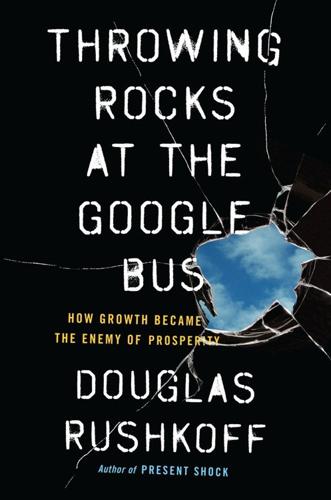
Throwing Rocks at the Google Bus: How Growth Became the Enemy of Prosperity
by
Douglas Rushkoff
Published 1 Mar 2016
Josh Constine, “Hail a Fellow Human, Not a Taxi with ‘Sidecar’—The New P2P Uber,” techcrunch.com, June 26, 2012. 33. Wilson, “Platform Monopolies.” 34. Betsy Corcoran, “Blackboard’s Jay Bhatt Strikes Up the Brass Band,” edsurge.com, July 23, 2014. 35. Justin Pope, “E-Learning Firm Sparks Controversy with Software Patent,” washingtonpost.com, October 15, 2006. 36. withknown.com. 37. Carlota Perez, Technological Revolutions and Financial Capital (Cheltenham, England: Edward Elgar Press, 2002). 38. Thomas Piketty, Capital in the Twenty-First Century, trans. Arthur Goldhammer (Cambridge, Mass.: Belknap Press, 2014). 39.

Capitalism Without Capital: The Rise of the Intangible Economy
by
Jonathan Haskel
and
Stian Westlake
Published 7 Nov 2017
As Bronwyn Hall has pointed out, interlocking suites of interlocking patents sometime act as a barrier to competition (Hall, Helmers, and Graevenitz 2015). In some cases, the potential productivity gain from synergies is sufficiently strong that there is a good case for weakening rather than strengthening IP rights—such as software patents, or telecoms, where there are a lot of interlocking patents that make it too hard for an innovating firm to bargain with all the relevant patent-holders. A further danger of strengthening IP laws is that it’s possible to do so in uneven and partial ways that favor incumbent rights-holders and patent trolls (both of which groups often devote significant resources to lobbying), while doing little to encourage new intangible investment.

How Music Got Free: The End of an Industry, the Turn of the Century, and the Patient Zero of Piracy
by
Stephen Witt
Published 15 Jun 2015
But that decision had also catalyzed a political movement that now threatened their own livelihoods. No software revenues meant no mp3 licensing income. No mp3 licensing income meant the German state would be out hundreds of millions, and Brandenburg’s white-on-white Ilmenau campus would still be a cow pasture. Both Brandenburg and Grill knew that, without the incentives of software patent revenue on the horizon, they never would have spent the better part of a decade conducting those listening tests. Brandenburg would likely have stayed in academia and sought a professorship. Grill might still be playing the trumpet. Listening to “Tom’s Diner” 2,000 times in a row was work, and the mp3 team would not have done that work without the incentive of future payoff.

Free culture: how big media uses technology and the law to lock down culture and control creativity
by
Lawrence Lessig
Published 15 Nov 2004
In a free society, with a free market, supported by free enterprise and free trade, the government's role is not to support one way of doing business against others. Its role is not to pick winners and protect them against loss. If the government did this generally, then we would never have any progress. As Microsoft chairman Bill Gates wrote in 1991, in a memo criticizing software patents, "established companies have an interest in excluding future competitors."[123] And relative to a startup, established companies also have the means. (Think RCA and FM radio.) A world in which competitors with new ideas must fight not only the market but also the government is a world in which competitors with new ideas will not succeed.
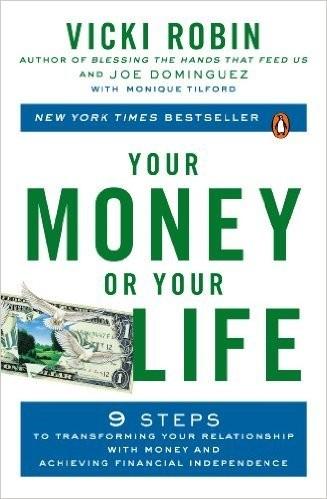
Your Money or Your Life: 9 Steps to Transforming Your Relationship With Money and Achieving Financial Independence: Revised and Updated for the 21st Century
by
Vicki Robin
,
Joe Dominguez
and
Monique Tilford
Published 31 Aug 1992
Last year marked the first such dip since the agency started recording the figure in 1982.1 Wikipedia, an online open-source encyclopedia, is another example of how sharing is the new hip way to get things done—in this case sharing knowledge. Other Internet sharing tools—like Flickr and YouTube—have quickly become “just the way we do things.” The ethic of sharing is so prevalent on the Web and with the under-forty crowd that it’s harder and harder to enforce intellectual property rights and software patents and even privacy. It’s not quite holding hands and singing Kumbaya, but sharing (at least in the world of the Web) is becoming the way of the world. Finally, we’ll point out that some frugal choices are healthy choices. For example, a vegetarian diet eliminates heart-clogging animal fats while reducing costs (meat is far more expensive than vegetables or rice and beans).
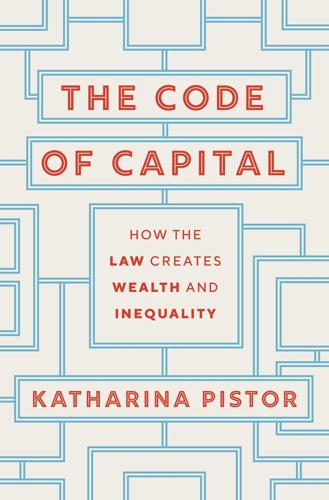
The Code of Capital: How the Law Creates Wealth and Inequality
by
Katharina Pistor
Published 27 May 2019
The search technology Google has deployed to build its data empire was patented. Stanford University owned, but Google held the exclusive license to PageRank (which has since expired). Google’s own patent lawyer 130 c h a P te r 5 called PageRank “one of the most famous and valuable of all modern software patents.”75 This may be dismissed as the typical hyperbole of a lawyer, but it fits squarely the worldview of patent lawyers who have claimed that patents, not humans, were responsible for the Industrial Revolution.76 Yet, we often celebrate the new discoveries and technical breakthroughs, but ignore the legal work behind the scenes that gives these breakthroughs lasting wealth effects.
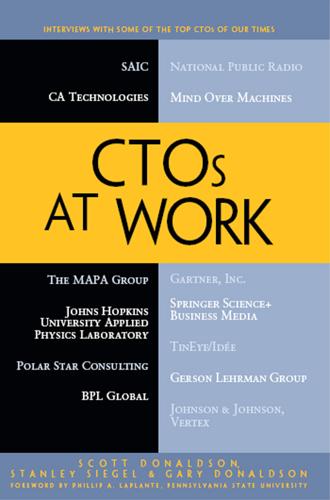
CTOs at Work
by
Scott Donaldson
,
Stanley Siegel
and
Gary Donaldson
Published 13 Jan 2012
Donaldson: How much do you do in terms of patents? Tolnar: I'll need to split that one up between hardware and software. Inour hardware area where we have a number of patents for our transformer monitoring solution both filed and approved. With software it's a bit different in that you really can't clearly file for software patents and some countries simply do not allow them. What we've done in the software arena involves method and process patents focusing on key product areas and functionality. We make sure to file copyrights for each application and functional module then keep them updated as we iterate them. S. Donaldson: Right.
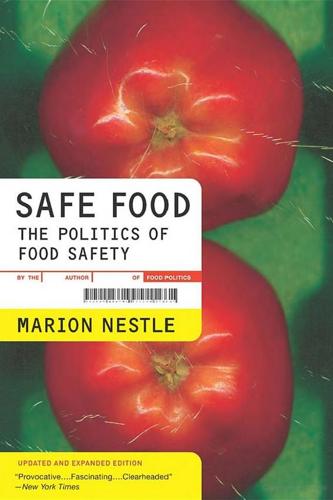
Safe Food: The Politics of Food Safety
by
Marion Nestle
Published 1 Jan 2010
A spokeswoman explained, “Monsanto has invested a lot of money . . . and we will protect that investment.”15 Injustice. Questions of justice cause distrust of genetically engineered foods because of court decisions that consistently favor the patent rights of food biotechnology companies. Biotechnology patents rank second only to software patents in generating lawsuits. In a case considered critical to the continued economic viability of the industry, an Iowa seed company challenged patent protection as monopolistic and contrary to Congressional intent. The company, Farm Advantage, purchased 600 bags of Pioneer Hi-Bred corn seed from a third company for about $54,000 and resold the seeds to customers.
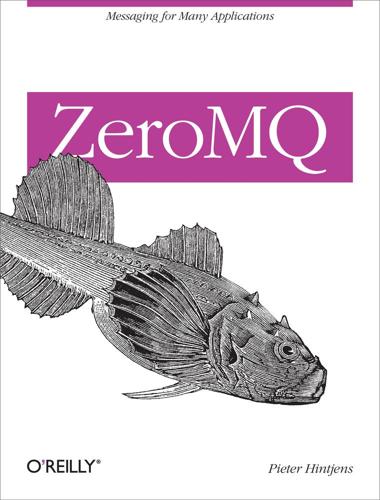
ZeroMQ
by
Pieter Hintjens
Published 12 Mar 2013
I say “almost” because we don’t yet have enough evidence of people doing this deliberately with a documented, reproducible process. It is what I’m trying to do with Social Architecture. ØMQ came after Wikidot, after the Digital Standards Organization (Digistan), and after the Foundation for a Free Information Infrastructure (aka the FFII, an NGO that fights against software patents). This all came after a lot of less successful community projects like Xitami and Libero. My main takeaway from a long career of working on projects of every conceivable format is: if you want to build truly large-scale and long-lasting software, aim to build a free software community. Psychology of Software Architecture Dirkjan Ochtman pointed me to Wikipedia’s definition of software architecture as “the set of structures needed to reason about the system, which comprise software elements, relations among them, and properties of both.”
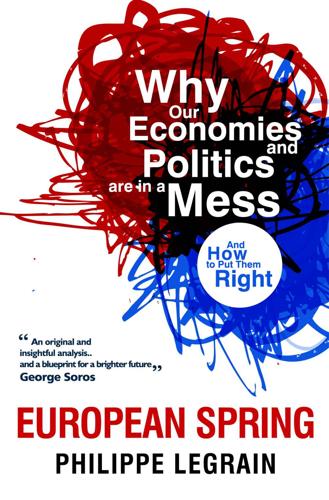
European Spring: Why Our Economies and Politics Are in a Mess - and How to Put Them Right
by
Philippe Legrain
Published 22 Apr 2014
Intellectual-property laws in Europe, though not as restrictive as in US, are unduly weighted towards the interests of patent holders. One study finds that the loss of patent protection boosts subsequent citations to the focal patent by 50 per cent on average – and thus that patents block cumulative innovation.641 Governments ought to look at reducing the length of software patents – or abolishing them altogether. Prizes are often a better of encouraging innovation, as Alex Tabarrok argues in Launching The Innovation Renaissance: A New Path to Bring Smart Ideas to Market Fast.642 Governments can play a vital role in mobilising resources and energies towards a well-defined goal.

MacroWikinomics: Rebooting Business and the World
by
Don Tapscott
and
Anthony D. Williams
Published 28 Sep 2010
With the help of companies like IBM, Red Hat, and Novell, the Linux community has organized a shared legal defense system and a patent commons to help protect developers from lawsuits. It’s a critical step because no company in their right mind would embed Linux in their products if they felt there was a high probability that a patent infringement suit could quickly derail their product But by pooling their software patents and making them available for free, major corporate participants in the Linux community are sending a signal to users, developers, and would-be adopters that Linux is open for business. Indeed, if they successfully lift the legal cloud over Linux, the stage could at last be set for open-source software to step it up a gear.
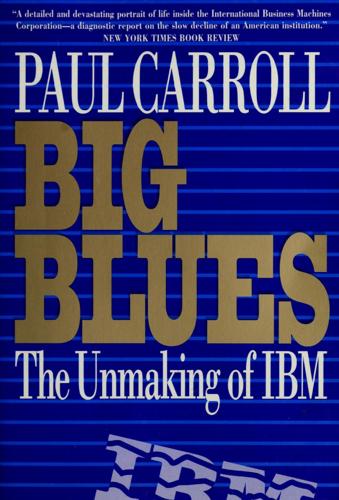
Big Blues: The Unmaking of IBM
by
Paul Carroll
Published 19 Sep 1994
Then they shook hands and said good-bye. This would be their last meeting. BIG BLUES 291 Once the heavy executive artillery decided it couldn’t make Gates cave in on royalties, Cannavino turned to the really big guns: his law yers. About nine months later, they carried the day. The lawyers decided that IBM held hundreds of software patents that everyone in the software business, Microsoft included, was vio lating. If Gates w anted to talk royalties, they told Microsoft, then let’s talk royalties. Gates eventually agreed to pay IBM some $20 million to get the rights to those patents. With the royalty issue finally settled, Gates decided to take Kuehler at his word: H e w anted to try again to talk business with IBM.
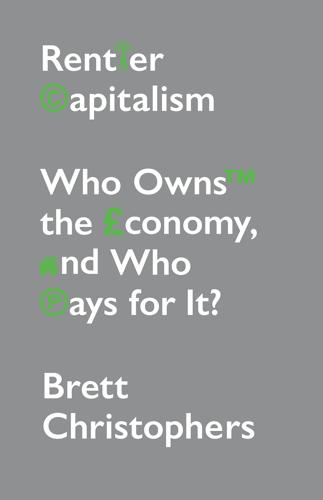
Rentier Capitalism: Who Owns the Economy, and Who Pays for It?
by
Brett Christophers
Published 17 Nov 2020
On the one hand, the presumption that an act performed overseas will not amount to an infringement of UK IP has come under challenge – most notoriously in Menashe Business Mercantile Ltd v William Hill Organization Ltd (2002). The latter company (the UK-based claimant) alleged that the former had infringed its UK software patent by supplying the software unlicensed to UK-based online gaming customers. Menashe’s domicile in Antigua nominally put it beyond the reach of UK courts – as did the fact that bets were placed via the host server, also located in Antigua. But the UK Court of Appeal begged to differ: even though the server was in Antigua, the patented invention was, it said, put ‘into effect’ in the UK because the user was the punter, and the UK was where the user was based.
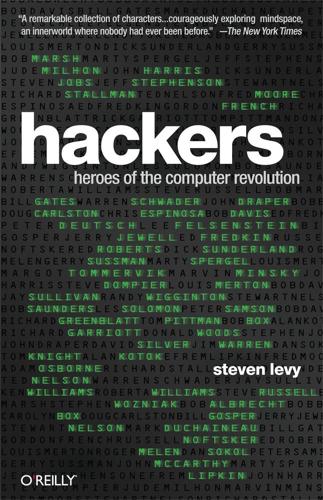
Hackers: Heroes of the Computer Revolution - 25th Anniversary Edition
by
Steven Levy
Published 18 May 2010
Stallman has also been an instrumental force in the League for Software Freedom, a group reflecting his belief that proprietary software is a pox upon the digital landscape. In 1991, his efforts came to the attention of those in charge of parceling out the coveted McArthur Fellowship “genius grants.” The last time I saw him, Stallman was organizing a demonstration against the Lotus Development Corporation. His protest regarded their software patents. He believed, and still does, that information should be free. —Steven Levy August 1993 Appendix C. Afterword: 2010 “It’s funny,” says Bill Gates. “When I was young, I didn’t know any old people. When we did the microprocessor revolution, there was nobody old, nobody. They didn’t make us meet with journalists who were old people.
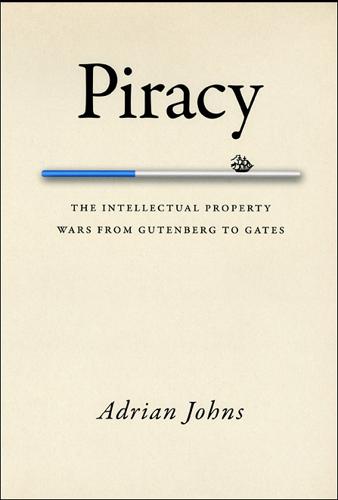
Piracy : The Intellectual Property Wars from Gutenberg to Gates
by
Adrian Johns
Published 5 Jan 2010
What seem like stable doctrines and concepts in the abstract inevitably fragment into conventional norms and rules of thumb when they are put to use in different areas. The principle of “fair use,” for example, is notoriously hard to systematize across domains. Expertise is correspondingly fragmented: populations of specialists exist for software patenting, for example, who work with skills and premises professionally distinct from those devoted to gene patenting. The problem is to frame basic categories of creative commerce in terms of that fact. What is needed, in effect, is a taxonomy rather like Defoe’s, fitted for the twentyfirst century.
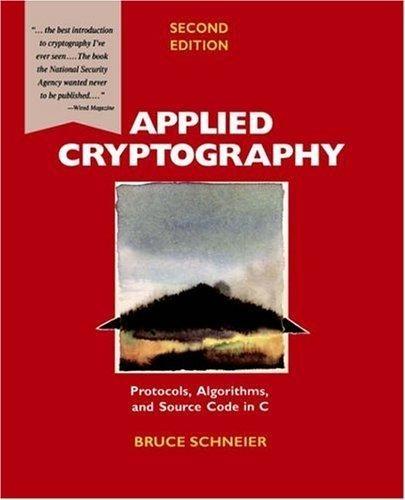
Applied Cryptography: Protocols, Algorithms, and Source Code in C
by
Bruce Schneier
Published 10 Nov 1993
We know that software can’t be destroyed and that widely dispersed systems can’t be shut down. People interested in joining the cypherpunks mailing list on the Internet should send mail to majordomo@toad.com. The mailing list is archived at ftp.csua.berkeley.edu in /pub/cypherpunks. 25.13 Patents Software patents are an issue much larger than the scope of this book. Whether they’re good or bad, they exist. Algorithms, cryptographic algorithms included, can be patented in the United States. IBM owned the DES patents [514]. IDEA is patented. Almost every public-key algorithm is patented. NIST even has a patent for the DSA.

Post Wall: Rebuilding the World After 1989
by
Kristina Spohr
Published 23 Sep 2019
China, he said, would support a denuclearised Korean peninsula (as recently called for by Roh) and would ask the CCP Congress to ratify the NPT.[128] China was also prepared to observe the guidelines of the Missile Technology Control Regime (MTCR) – but only if the US lifted the recent sanctions imposed on two Chinese companies that owned the licensing of American high-speed computers and satellites. He and Baker also reached agreements on US access to Chinese markets and the protection of American intellectual property, specifically regarding computer software, patents and publications. On human rights, too, Qian was willing to make some concessions. These included promises that two leading critics of the regime would be released and that dissidents who had served jail sentences could travel to America. In addition, US diplomats would be allowed to visit China’s prisons.